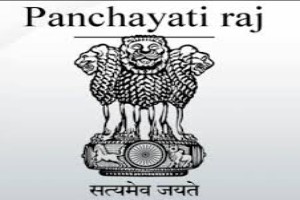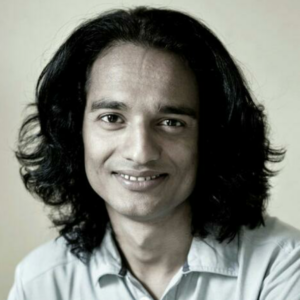
Perspective
 By Kaushal Kishore*
By Kaushal Kishore*
The contentious issue of villagers’ rule in Panchayati Raj
The state government has ripped off the financial powers of elected representatives after the recent panchayat elections in Rajasthan. As a consequence the funds of the Finance Commission will be spent by the bureaucracy with the recommendation of these village heads. Now thousands of representatives of villagers are unhappy. Sarpanch union has started a series of protests under the leadership of Vanshidhar Garhwal. Panchayat leaders from Uttar Pradesh like Ashok Jadaun also reached there to support them. They are shutting the Panchayat offices down. The suspension of the Prime Minister’s announcement to provide funds directly to the panchayats is in focus. Meanwhile the protest of panchayat representatives came to an end in Jharkhand. The elected bodies have completed their term during lockdown triggered by the pandemic. As such the government dissolved them without declaring the dates for fresh elections. The three-tier Panchayati Raj institutions became non-functional, and their leaders launched the protest that prolonged for several weeks. Here, the panchayat leaders achieved an unexpected success. The generosity of state government has been in the picture since January 7, 2021, when Aditya Ranjan, Director for Panchayati Raj Department issued notification to that effect.
In the first week of January, Hemant Soren’s government handed over powers to the elected representatives of the villagers instead of the bureaucrats. This is a historical achievement associated with the Panchayat that can render opportunity to rectify the folly that prevails for a long time. The state government has constituted committees under the chairmanship of elected representatives at the district, block and village levels to run the system smoothly for the next six months. As such the responsibility of development in rural areas lies in the hands of the committee. The state officials have also been included as members to ensure mutual cooperation. Plus, the committee will hand over the powers to the newly elected team after the fresh elections. This new hope can strengthen the Panchayati Raj institutions.
The role of Jharkhand can be observed if we look at the brief history of Panchayati Raj institutions in independent India. Pandit Binodanand Jha known to advocate for the panchayat in the Constituent Assembly hailed from Deoghar (now in Jharkhand). This was further supported by certain members like Balvantray Mehta from Gujarat. As such it got a place in the Constitution as a part of the directive principles. First legal framework on Panchayat in the history of India was promulgated as Bihar Panchayati Raj Act in 1947 while he was heading the portfolio in the government. Three years later in 1950, a separate state level autonomous body came into existence known as Bihar Rajya Panchayat Parishad. Again in 1955, Jha is known to have started monthly magazine highlighting importance of public awareness for betterment of the rural areas. The new initiative of Hemant Soren in Jharkhand can remind his works. In the twenty-first century, the forest rights of the tribes and villagers are accepted on the global platform in order to protect the environment and ecology. If these institutions go ahead while taking this wisdom into the account, the state can lead us in future.
After independence, in 1954 Lok Nayak Jai Prakash Narayan wrote a letter to the then Prime Minister Jawaharlal Nehru for the decentralisation of democracy that deals with the village. Mahatma Gandhi wrote Hind Swaraj in 1909, and that can be referred to its background. In fact on village and panchayat this is one of the most important literary works of modern India. This attempt to define the home rule is still equally relevant. After three years the government. of India commissioned the celebrated Balvantray Mehta Committee in 1957. Its recommendation proved to be the basic foundation of the formation of the three-tier Panchayati Raj institutions. The leader of British Labour Party Harold Laski wrote A Grammar of Politics in 1925 that’s treated as yet another significant work on this subject, and that seems to dominate Indian politics. He had focussed on the local self-rule instead of Gandhi’s home rule that proved to be instrumental in implementing the central control in a village. S.K. Dey, Rural Development Minister in the then Jawaharlal Nehru government had tried hard to carry it forward through community development program. The forces for public works in a village was replaced by the public servants. The weakening of a village panchayat started with lack of participation of villagers in community services. As such the dream of home rule in Indian villages got surrendered before the technical complexities.
As a consequence of 73rd amendment to the Constitution in 1993, the Panchayati Raj institutions got legal validity. They have been allocated 29 departments. But still remained on the mercy of the state governments and failed to establish the home rule. Recently the government of Jharkhand has started an effort to empower panchayat as an appreciative move. If this spirit is sustained, it can prove to be a healing effort that will make the villages self-sufficient, and to realise the dreams of home rule as referred in the terms of Hind Swaraj.





